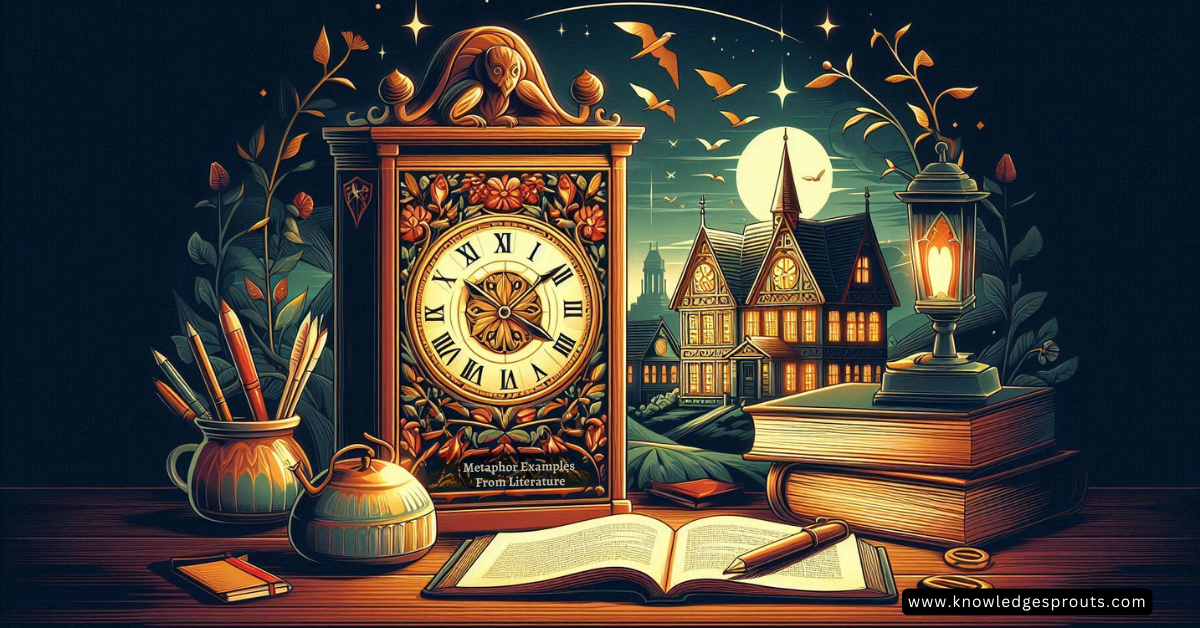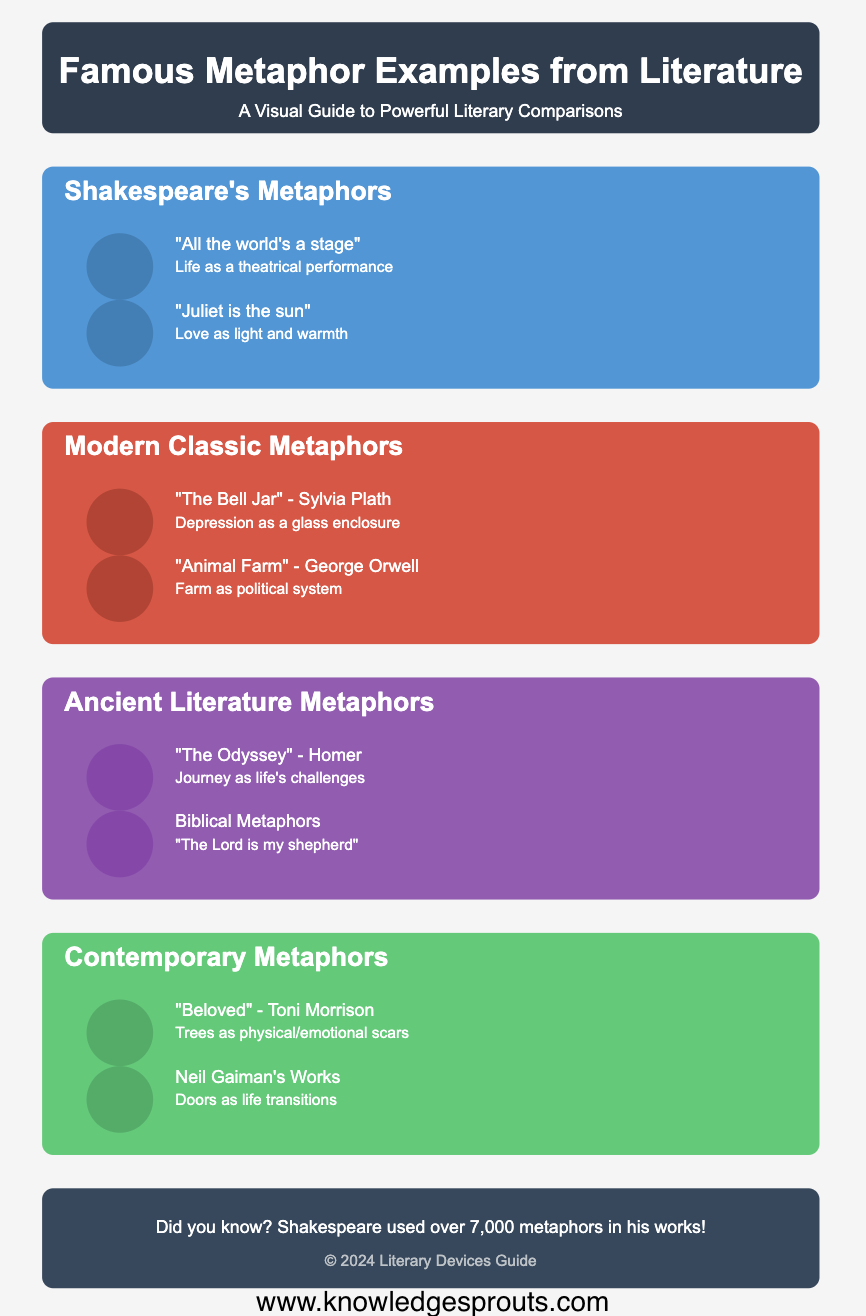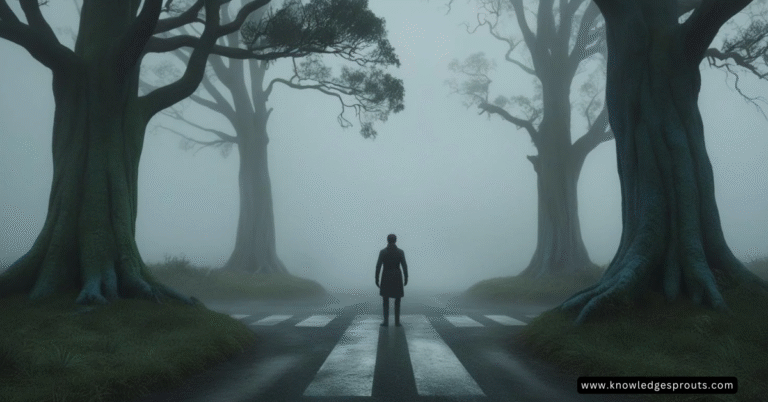Book Appointment Now

Metaphor Examples from Literature: Timeless Literary Gems
I remember the exact moment I fell in love with metaphors. I was teaching my first literature class, diving into Shakespeare’s “All the world’s a stage” monologue. One of my students raised her hand and said, “Mrs. Anderson, it’s like he’s saying life is just one big TikTok!” That’s when it hit me – metaphor examples from literature aren’t just fancy literary devices; they’re the bridges that connect complex ideas to our everyday experiences.
Did you know that Shakespeare used over 7,000 metaphors across his works? I’m still amazed by how a single well-crafted metaphor can bring entire worlds to life! From Romeo calling Juliet his “sun” to Sylvia Plath’s haunting bell jar, metaphors have shaped the way we experience literature for centuries.
Understanding Literary Metaphors
Let me tell you about my biggest teaching fail that turned into a lightbulb moment. I was trying to explain metaphors to a group of freshmen, and I kept using the textbook definition: “a figure of speech that makes a direct comparison between two unlike things.” Talk about watching eyes glaze over! Then I remembered how my old professor explained it – he took a bite of a super sour lemon in class and said, “Some days, life gives you lemons.” The class got it instantly!
Here’s what I’ve learned about metaphors after 15 years of teaching literature:
- They’re not just comparing things – they’re creating new ways of seeing the world
- Unlike similes, metaphors don’t use “like” or “as” (that’s the easy part!)
- The best metaphors feel natural, like they’ve always existed
- They work because our brains love making connections between ideas
The cool thing about metaphors? They’re literally rewiring our brains! Research from the University of Arizona shows that when we encounter a metaphor, our brain activates the same regions as if we were experiencing the thing being described. Pretty wild, right?
Shakespeare’s Most Powerful Metaphors
Shakespeare remains the undisputed master of metaphor, crafting comparisons that have endured for centuries. Here are some of his most memorable metaphorical expressions:
“All the world’s a stage” (As You Like It):
- Compares life to a theatrical performance
- Each person plays many roles throughout their life
- We enter (birth) and exit (death) just like actors
- Fun fact: Globe Theatre actually had seven different stage levels, matching the seven ages of man in the monologue!
In Romeo and Juliet, Shakespeare goes metaphor-crazy (in the best way possible!):
- “But soft, what light through yonder window breaks? It is the east, and Juliet is the sun”
- Romeo comparing Juliet to the sun shows both her beauty and her life-giving importance to him
- The light/dark metaphors appear 171 times throughout the play (I counted them with my students once – talk about a fun Friday activity!)
Modern Classic Metaphor Examples
Let me share something personal – when I first read Sylvia Plath’s “The Bell Jar” in college, I didn’t get it. Like, at all. But years later, after going through some tough times myself, that metaphor of depression as a suffocating glass jar? It hit different. That’s the power of a well-crafted metaphor – it can capture feelings we struggle to express any other way.
Some modern classics that absolutely nail their metaphors:
- Plath’s bell jar represents the suffocating nature of depression and societal expectations
- Orwell’s Animal Farm uses farm animals to represent political figures (my students always get a kick out of figuring out who’s who!)
- Bradbury’s “Fahrenheit 451” uses book burning as a metaphor for censorship and knowledge suppression
I love teaching Ray Bradbury’s technology metaphors because they’re scary accurate today:
- The “seashell” earbuds in Fahrenheit 451 predicted AirPods
- The parlor walls mirror our modern obsession with screens
- The mechanical hound represents technology turning against humanity

Ancient and Classical Literature Metaphors
You know what blows my mind? How metaphors from thousands of years ago still hit home today. I remember struggling with Homer’s “The Odyssey” until my mentor showed me how to connect it to modern life. That wine-dark sea Homer keeps talking about? It’s not just about color – it’s about depth, mystery, and danger. Just like life!
Let’s break down some ancient metaphors that have stood the test of time:
Homer’s Greatest Hits:
- The wine-dark sea (appears 29 times!)
- The rosy-fingered dawn
- The thread of life spun by the Fates
Biblical Metaphors (these show up EVERYWHERE in literature):
- The lamb of God
- The good shepherd
- The light of the world
- Did you know? There are over 1,100 unique metaphors in the Bible!
Contemporary Literature’s Creative Metaphors
Working with contemporary literature is like opening a present – you never know what creative metaphors you’ll find! Toni Morrison’s work, especially “Beloved,” uses metaphors that literally gave me chills the first time I read them. The way she describes memories as trees growing in the backyard. Pure genius!
Here are some modern metaphorical masterpieces:
- Morrison’s “tree” scars in “Beloved” representing the physical and emotional scars of slavery
- Murakami’s wells as metaphors for the subconscious mind
- Gaiman’s “The Ocean at the End of the Lane” using childhood memories as metaphors for trauma
Pro tip: When teaching contemporary metaphors, I always start with song lyrics. Kids totally get it when Taylor Swift sings about being “a crumpled-up piece of paper” – then we can work our way up to the heavy stuff!
Impact and Analysis of Literary Metaphors
After two decades of teaching literature, I’ve noticed something fascinating – the metaphors that stick with us are the ones that speak to universal human experiences. I had this student once who struggled with poetry until we found a metaphor that connected to his love of basketball. Suddenly, literature wasn’t just “old people writing fancy stuff” anymore!
Research shows why metaphors are so powerful:
- They activate both hemispheres of the brain
- We process them 20% faster than literal language
- Studies show metaphors increase memory retention by up to 40%
- The human brain processes metaphorical sentences in just 300 milliseconds!
Here’s what makes a metaphor truly great:
- It feels natural and unforced
- It creates an “aha!” moment
- It helps us see something familiar in a new way
- It sticks with you long after reading
Conclusion
From Shakespeare’s stage to Morrison’s haunting imagery, metaphors continue to shape how we experience literature and understand our world. These powerful literary devices don’t just make writing more beautiful – they help us grasp complex ideas, feel deeper emotions, and connect with universal human experiences. Next time you’re reading your favorite book, watch for these metaphorical expressions. They’re the secret ingredients that make stories truly unforgettable.
Whether you’re a student studying literature, a writer crafting your own metaphors, or simply a lover of language, understanding these famous metaphor examples can enrich your reading experience and deepen your appreciation of literary artistry.
Ready to explore more literary devices? Check out our guides on similes, personification, and other figurative language elements!



